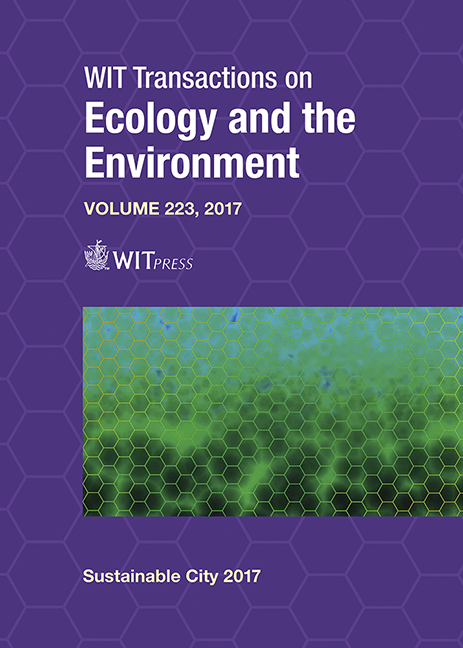PROGRESS, MOBILITY AND URBAN REGENERATION IN A TRADITIONAL NEIGHBOURHOOD: EL ENCINO, MEXICO
Price
Free (open access)
Transaction
Volume
223
Pages
11
Page Range
345 - 355
Published
2017
Size
518 kb
Paper DOI
10.2495/SC170301
Copyright
WIT Press
Author(s)
ALEJANDRO ACOSTA COLLAZO
Abstract
During the second half of the 20th century, the cities in Latin America began to grow rapidly, and the historic built environment has changed since then. Some of them preserved historic architecture, some others changed dramatically, and a few combined historic buildings with factories and the dynamics of new ways of mobility. This is the case of the neighbourhood: El Encino in Aguascalientes, Mexico. The factory: JM Romo was established in 1957 in El Encino. It pursued welfare and prosperity in the neighbourhood, helping with economics sustainability, such as a theme park development, building an indoor basketball court and schools for its workers. Somehow a social sustainability was achieved, but there was a loss of the historic buildings that were bought by the factory –and then they were torn down, and trucks changed the mobility on the narrow streets of the historic neighbourhood. So now the urban image of El Encino is a combination of the factory facades, parking lots and historic buildings. To find out about the social benefits to the factory workers and the opinion of the inhabitants of the neighbourhood two different surveys were conducted. Some of the results showed that the factory has pursued facilities for their workers, but not for the whole neighbourhood. Also, some residents built a garage in their houses because of the increasing traffic. Fortunately, the city planning has considered in the last years restoring the facades of the main houses, also changing the pavement, and building a new museum. Besides, the Guadalupe Posada Museum preserves the famous printings of this Mexican designer. It is through the analysis of the factory impacts (social and mobility), the developing of the neighbours to improve their own resilience and the late urban planning that the site can be preserved as part of a sustainable city.
Keywords
urban image, cultural heritage site, mobility, city planning, sustainable city





